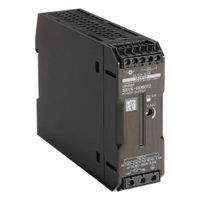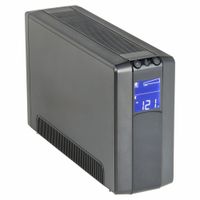Call +(254) 703 030 000 / 751 483 999 / 721 704 777
- Home
- Electrical
- Transformers Ups Power Supplies
.....Read More
Frequently Asked Questions
What is the difference between a UPS and a power conditioner?
A UPS (Uninterruptible Power Supply) and a power conditioner both protect electronics, but in different ways. A power conditioner primarily filters and regulates incoming power, protecting against voltage fluctuations, surges, and noise. It ensures a clean and stable power supply, extending the lifespan of sensitive equipment. However, it does not provide backup power during an outage.
A UPS, on the other hand, provides temporary battery backup power in addition to surge protection and basic power conditioning. In the event of a power outage, a UPS allows connected devices to continue running for a short period, giving users time to save work and shut down equipment properly, preventing data loss or hardware damage. Some advanced UPS units also offer more comprehensive power conditioning similar to a dedicated power conditioner.
In essence, a power conditioner focuses on improving the quality of power, while a UPS focuses on providing uninterrupted power, making it suitable for critical systems that require continuous operation even during power disruptions.
How does a transformer protect sensitive electronic equipment?
A transformer protects sensitive electronic equipment by isolating the equipment from the power source and regulating the voltage. It works on the principle of electromagnetic induction, transferring electrical energy between two or more circuits through a varying magnetic field. This isolation prevents common-mode noise, such as surges and spikes, from reaching the sensitive electronics.
Additionally, transformers can step down or step up voltage, ensuring the equipment receives the precise voltage it requires. This voltage regulation is crucial because fluctuations in voltage can damage components, reduce lifespan, or cause malfunctions. By providing a stable and isolated power supply, transformers effectively shield electronic devices from damaging power anomalies, ensuring their longevity and reliable operation. They are particularly vital in environments with unstable power grids or where precise voltage control is necessary for optimal performance of sensitive systems.
What are the benefits of using a phase converter?
A phase converter allows three-phase equipment to operate from a single-phase power supply. This is particularly beneficial in locations where three-phase power is unavailable or cost-prohibitive to install.
Key benefits include: * **Cost Savings:** Avoiding the expensive installation of a dedicated three-phase line.
* **Equipment Versatility:** Enabling the use of highly efficient and often more robust three-phase machinery in workshops, farms, and homes.
* **Performance:** Modern phase converters, especially rotary and digital types, provide balanced three-phase power that ensures optimal performance and longevity of three-phase motors and equipment.
* **Flexibility:** Businesses can expand operations into locations without readily available three-phase power.
* **Efficiency:** Three-phase motors are generally more efficient than single-phase motors, leading to lower operating costs over time.In summary, a phase converter is a practical and economical solution for anyone needing to run three-phase machinery without direct access to a three-phase utility supply.
How long can a UPS keep equipment running during a power outage?
The runtime of an uninterruptible power supply (UPS) during a power outage varies significantly based on several factors, primarily the capacity of the UPS battery, the power consumption of the connected equipment, and the battery's age and condition.
A typical consumer-grade UPS for a home computer might provide only a few minutes of backup power, just enough time to save work and safely shut down the system. This brief runtime is generally sufficient to prevent data loss or hardware damage from sudden power cuts.
For more critical applications, such as servers, networking equipment, or medical devices, larger and more robust UPS systems are employed. These professional-grade units often incorporate external battery packs or can be configured with multiple batteries to extend runtime from several minutes to hours. The specific duration depends on the load; the more devices connected and the higher their power draw, the shorter the runtime will be.
Manufacturers usually provide charts or calculators to estimate runtime based on the load. It's crucial to select a UPS with a battery capacity (measured in Volt-Amperes, VA, or Watts) that matches or exceeds the total power requirements of the equipment it will protect, ensuring it can provide sufficient power for the desired duration during an outage. Regular battery maintenance and replacement are also essential to ensure the UPS performs optimally when needed.
What is the role of a power supply in protecting electronic devices?
A power supply is crucial for protecting electronic devices by regulating and filtering the electrical current they receive. It acts as a buffer between the raw utility power, which can be inconsistent, and the sensitive internal components of a device.
One of its primary protective roles is voltage regulation. A stable power supply ensures that the device receives a constant voltage, preventing damage from voltage spikes, sags, or fluctuations that can lead to overheating, component degradation, or immediate failure.
Furthermore, a good power supply incorporates overcurrent protection, often through fuses or circuit breakers. If a sudden surge in current occurs, these mechanisms will trip, cutting off power to the device and preventing damage to its internal circuitry. Some power supplies also include short-circuit protection, immediately shutting down if a short circuit is detected.
Filtering is another vital function. Power supplies often include components that filter out electrical noise and interference from the AC line, providing a cleaner DC power signal to the device. This "clean" power reduces the risk of operational errors, data corruption, and premature component wear.
In essence, a power supply acts as a gatekeeper, ensuring that only clean, stable, and appropriately regulated power reaches the electronic components, thereby extending their lifespan and maintaining optimal performance.
How do line isolation monitors enhance equipment safety?
Line isolation monitors (LIMs) enhance equipment safety by continuously monitoring the integrity of an isolated power system, typically found in critical care areas of hospitals. These systems are designed to prevent the risk of electrical shock to patients and staff by isolating the electrical supply from ground. A LIM works by injecting a small current into the isolated system and measuring any leakage current to ground. If the leakage current exceeds a pre-set threshold, the LIM provides an audible and visual alarm, indicating a fault condition. This early warning allows medical personnel to identify and rectify potential electrical hazards before they can cause harm. By providing continuous monitoring and immediate alerts, LIMs significantly reduce the risk of microshocks and macroshocks, ensuring a safer environment for patients, especially those who may be electrically sensitive or connected to medical devices. They are a crucial component in maintaining the safety and reliability of electrical systems in healthcare facilities.
What factors should be considered when choosing a UPS for a server?
When choosing a UPS (Uninterruptible Power Supply) for a server, several critical factors should be considered to ensure reliable power protection and minimize downtime: * **Capacity (VA/Watts):** This is perhaps the most important factor. You need to calculate the total power consumption of all connected equipment (server, monitors, network gear, etc.) and choose a UPS with a VA (Volt-Ampere) rating at least 20-25% higher than your peak load. The Watt rating is also crucial, as it represents the real power the UPS can deliver.
* **Runtime:** Determine how long your server needs to run on battery power after an outage. This depends on your graceful shutdown procedures and how quickly you can resolve power issues. Runtimes can range from a few minutes to several hours, often extendable with external battery packs.
* **Topology:**
* **Standby (Offline) UPS:** Most basic and affordable, but offers less protection. It switches to battery only when utility power fails.
* **Line-Interactive UPS:** More advanced, it regulates voltage fluctuations without switching to battery, extending battery life. Good for small to medium businesses.
* **Online (Double-Conversion) UPS:** Provides the highest level of protection, continuously converting AC to DC and then back to AC, isolating connected equipment from power fluctuations and outages. Ideal for critical servers and data centers.
* **Output Waveform:** For sensitive server equipment, a "pure sine wave" output is essential. Modified sine wave UPS units are less expensive but can cause issues with some power supplies and equipment.
* **Management Features:** Look for features like network management cards (SNMP), USB/serial connectivity for graceful shutdown, and monitoring software that provides real-time status and alerts.
* **Number and Type of Outlets:** Ensure there are enough outlets for all your equipment and that they are surge-protected.
* **Form Factor:** Rack-mount or tower depending on your server rack setup.
* **Scalability:** Consider if you might need to add more servers or equipment in the future and if the UPS can be expanded.
* **Warranty and Support:** A good warranty and responsive technical support are important for peace of mind.
How do power conditioners stabilize AC power?
Power conditioners stabilize AC power by performing several functions to ensure a clean and consistent electrical supply to connected devices. They typically incorporate voltage regulation, surge protection, and noise filtration.
Voltage regulation is achieved through mechanisms like automatic voltage regulators (AVRs) or ferroresonant transformers. AVRs continuously monitor the input voltage and adjust it to maintain a stable output, correcting for sags (undervoltage) and swells (overvoltage). Ferroresonant transformers use a resonant circuit to store energy, providing a stable output voltage even with significant input voltage fluctuations.
Surge protection components, such as MOVs (metal oxide varistors) or TVS (transient voltage suppression) diodes, divert excess voltage from surges or spikes away from sensitive electronics, preventing damage.
Noise filtration is crucial for removing electrical noise and interference from the AC line. This noise can originate from various sources, including motors, lighting, and radio frequency interference. Power conditioners use filters (e.g., common mode and differential mode filters) that consist of capacitors and inductors to attenuate high-frequency noise, ensuring a clean sine wave output.
By combining these functions, power conditioners protect equipment from voltage anomalies, power surges, and electrical noise, leading to improved performance, extended lifespan, and reliable operation of connected devices.
What are the advantages of using micro data center systems?
Micro data center systems offer several advantages over traditional data centers, particularly for organizations seeking increased agility, reduced latency, and enhanced security at the edge.
One of the primary benefits is their compact size, which allows for deployment in smaller, more diverse locations closer to data sources or end-users. This proximity significantly reduces latency, which is crucial for applications requiring real-time processing, such as IoT devices, autonomous vehicles, and augmented reality.
Another key advantage is improved security. By decentralizing data processing and storage, micro data centers can isolate sensitive data, making it less vulnerable to large-scale cyberattacks that target centralized systems. They can also be deployed in physically secure environments, further protecting critical infrastructure.
Furthermore, micro data centers are often more energy-efficient than their larger counterparts. Their smaller footprint and optimized cooling systems lead to lower power consumption and operational costs. This can be particularly beneficial for organizations looking to reduce their carbon footprint and achieve sustainability goals.
They also offer enhanced scalability and flexibility. Organizations can deploy micro data centers incrementally as their needs evolve, rather than investing in a massive, upfront build-out. This modularity allows for quicker deployment of new services and applications, adapting to changing business demands more efficiently.
Finally, micro data centers contribute to business continuity and disaster recovery. By distributing data processing capabilities across multiple locations, an outage at one site is less likely to impact the entire network, ensuring greater resilience and continuous operation.
How often should UPS batteries be replaced to ensure reliability?
Please specify the topic you would like me to elaborate on.




